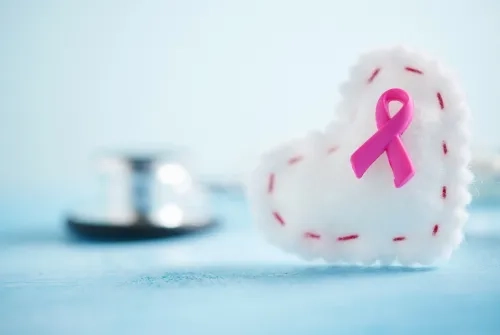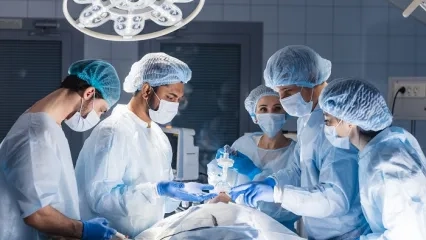Alo Yeditepe
Alo Yeditepe
The Biggest Obstacle to Early Diagnosis of Breast Cancer: LACK OF INFORMATION
Statistics show that one in eight women have breast cancer. Although the disease is so common, the good news is that over 90 percent of breast cancer caught in the early stages can be cured completely. Breast cancer, which is diagnosed after symptoms have occurred, is usually at a later stage and is more likely to spread to other parts of the body. The key to successful treatment is early diagnosis and screening. Unfortunately, although imaging facilities such as mammography and ultrasound are so advanced, the lack of information is still the biggest obstacle to early diagnosis.
Yeditepe University Kozyatağı Hospital General Surgery Specialist Prof. Dr. Özcan Gökçe says that breast cancer screening methods are not used enough in Turkey due to unacceptable information. We know that breast cancer-related deaths in women who underwent screening mammography decreased by 40 percent compared to women who did not undergo mammographic screening. Not using screening mammography can reduce surgical options that can prevent breast loss as well as lead to basic results such as death or reduced life expectancy in women.
Prof. Dr. Özcan Gökçe updates the incorrect information on breast cancer, especially screening methods, with accuracy…
"I felt a lump in my breast during the manual examination, but my mammography results were negative. I do not need to worry…"
Fact: In the early diagnosis of breast cancer, all diagnostic methods such as breast exam mammography and ultrasound are of particular importance. However, a certain percentage of breast cancer cannot be detected by mammography. For this reason, it is important to consider even a small change in the breast and to evaluate it in detail "by the breast surgeon" and to check the patient with other breast imaging methods if necessary.
If there are no symptoms related to breast cancer, it is not necessary to have a mammogram.
Fact: Like many types of cancer, breast cancer usually shows no symptoms in the early stages. When the cancer begins to give its noticeable signals, it may have progressed. Therefore, women need to have regular breast examinations and periodic mammographic examinations.
Mammography causes cancer.
Fact: Mammography, which is used in the early diagnosis of breast cancer, has been used since the 1960s. Prof. Dr. Özcan Gökçe says that hundreds of thousands of women had mammography during this time and there is no direct evidence that mammography causes cancer in the light of these data. "In fact, the mammography discussed here is the potential risk of developing radiation-induced cancer. Statistically calculated, this probability risk is 100 times lower than a woman's natural likelihood of developing breast cancer."
Mammography is a painful method.
Fact: During mammography examination, the breast is squeezed slightly between the two plates in order to obtain better quality imaging by giving less radiation. Since the pain threshold varies individually, it is not possible to evaluate it directly. For this reason, some women may express discomfort during exposure. The new generation of digital mammography and tomosynthesis devices reported lower compression pressure. Moreover, most women who have a mammogram for the first time do not feel pain during the procedure and what they hear from the environment is very exaggerated. It is stated that one of the main reasons that affect pain during mammography is the experience of the technician who performed the mammography.
Women with small breasts are less likely to get breast cancer.
Fact: Breast size does not affect cancer development. The number of mammary glands and ducts in the breast is shown to be a more effective factor than size in cancer development. In summary, the amount of milk channels and glands in the breast is important rather than its size. Women with a high amount of milk glands can also be identified by mammography. In addition, thanks to the mammography device's ability to separate normal breast tissues and determine the amount, it can be predicted which imaging method can be effective according to the characteristics of each woman's breast structure.
Breast cancer is more common in those who have a family history.
Fact: Those with breast cancer in the family and especially in first-degree relatives are at increased risk compared to the general population. However, the risk does not necessarily mean that cancer will develop. About 80 percent of women diagnosed with breast cancer have no family history.
If there is a lump or swelling in the breast, cancer develops.
Fact: It is important to distinguish between benign and malignant in the tubers that the patient notices with his own hands or that will be detected after the clinical examination. Approximately 80 percent of these lumps undergo benign changes and are caused by cysts or different breast diseases. It may be necessary to use diagnostic methods such as mammography, ultrasound, or biopsy by the physician to determine if these tubers are cancerous.
"I am too young to get breast cancer."
Fact: Age is an important risk factor for breast cancer, and there is an increase, especially after menopause. However, breast cancer can also be found in young people, although less frequently. "According to statistics, about 25 percent of women with breast cancer are less than 50 years old", said Prof. Dr. Özcan Gökçe and provides the following information:
"Except for women in the high-risk group, young women (under 40) do not need to be screened by mammography every year. Usually, annual examination and ultrasonography examination suffice. If deemed necessary after the clinical examination performed by the breast surgeon, evaluation can be made with other imaging methods."
Breast cancer necessarily gives symptoms to the masses in the breast.
Fact: As with many benign breast diseases, mass in the breast can also be a symptom of cancer. However, breast cancer does not always show symptoms as a palpable mass in the breast. It is also necessary to be alert to other symptoms such as withdrawal at the nipple, discharge from the nipple, redness, and thickening of the skin. It is important to remember that long before these symptoms occur, cancerous cells in the breast begin to multiply and spread over time in the breast and outside the breast. Thanks to imaging methods, cancer can be detected long before these symptoms appear.
About
Faculty and Year of Graduation:
Hacettepe University Faculty of Medicine, 1980
”
See Also
- What is a Liver Transplant, How is it Done? and Who is it For?
- What is Gallbladder Surgery?
- Patched Solution for Umbilical Hernia
- What are the Symptoms and Treatment Methods of Cirrhosis?
- 3 Major Developments Shaping Treatment in Colon Cancer
- Can Weight Loss Despite Not Dieting Be a Sign of Cancer?
- He Came to Turkey to Get Rid of the Colostomy Bag
- Breast Protective Surgery Is Not Recommended in the Treatment of Multifocal Breast Cancer
- Early Detection Is Cancer's Most Powerful Enemy
- Breast Cancer Has Dethroned Lung Cancer for The First Time! But, Why?
- Liver Cancer (Tumor) and Treatment
- Gallbladder Stones
- What Is Appendicitis?
- Hemorrhoid Treatment
- Questions About Gastroenterology Surgery
- Surgery for Breast Cancer and Breast Aesthetics Can Be Performed Simultaneously
- New Study Surprised: “Mortality Increased in Breast Cancer Cases Under the Age of 40”
Alo Yeditepe





